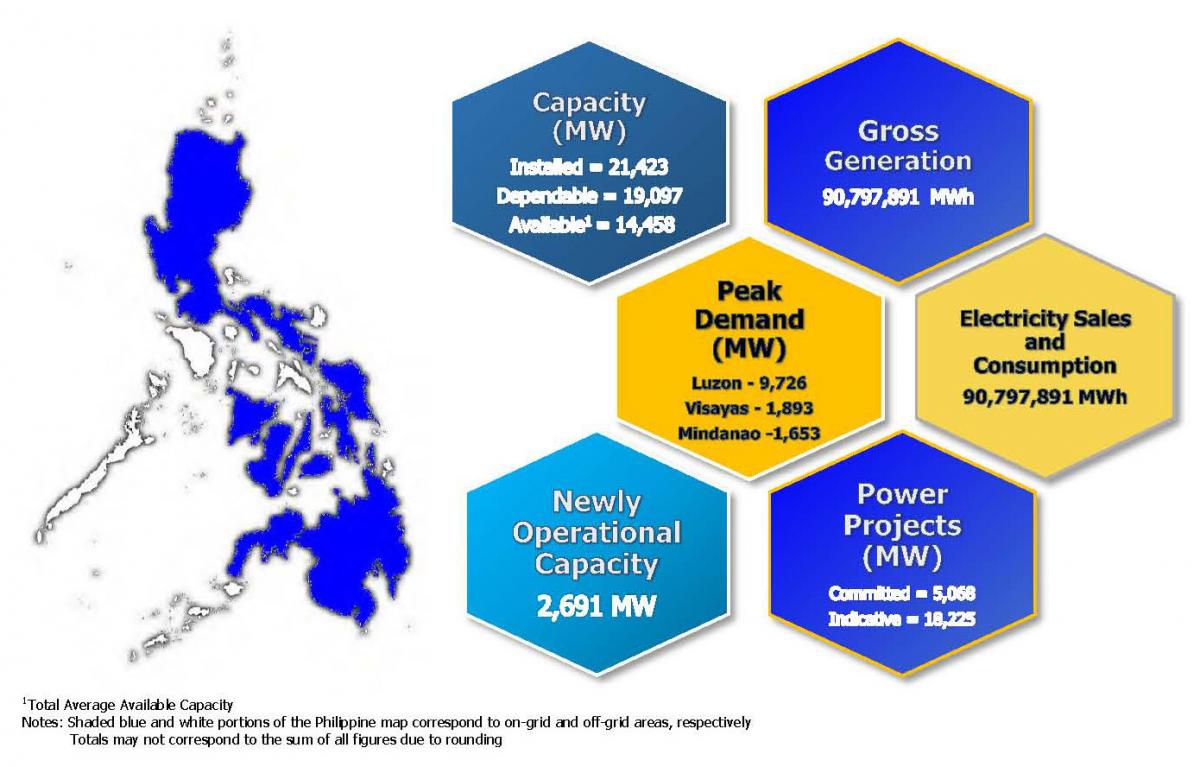2016 Philippine Electricity Demand-Supply Snapshot

The year 2016 is characterized by a significant increase in electricity consumption at 10% and peak demand at 8.7% attributed to several factors such as the increase in temperature and utilization of cooling equipment aggravated by the strong El Niño, the conduct of National and Local elections during the first half of the year, increase in economic growth, and entry of large power generating plants. The residential and industrial sectors remained the major drivers of electricity consumption in the country while Luzon remained the largest on a per grid basis.
Notably, the growth of the country’s supply base supplemented the increase in demand with the growth of total installed capacity at 14% from 18,765 MWh (2015) to 21,423 MWh (2016) majority coming from coal-fired power plants. Among the three grids, Mindanao has the highest recorded growth in terms of capacity at 31% from 2015-2016. From 2017-2025 a total of 5,068 MW committed projects are expected to come online. The DOE is continuously encouraging investments in power generation in view of the increasing peak demand which is expected to grow by more than triple* in 2040.
Along with supply security, the DOE also embarks on increasing the reliability and resiliency of the system. In 2016, several yellow and red alerts were declared by the system operator in Luzon and Visayas in addition to the major grid disturbances and load dropping incidents. Among the three major grids, Mindanao was adversely affected by El Niño which caused the decline in hydro power generation and curtailment of supply during the first half of 2016. The entry of large coal-fired power plants in Mindanao on the latter part of 2016 has addressed these supply shortfalls.
Click to view/download PDF file of 2016 Philippine Power Situation Report
